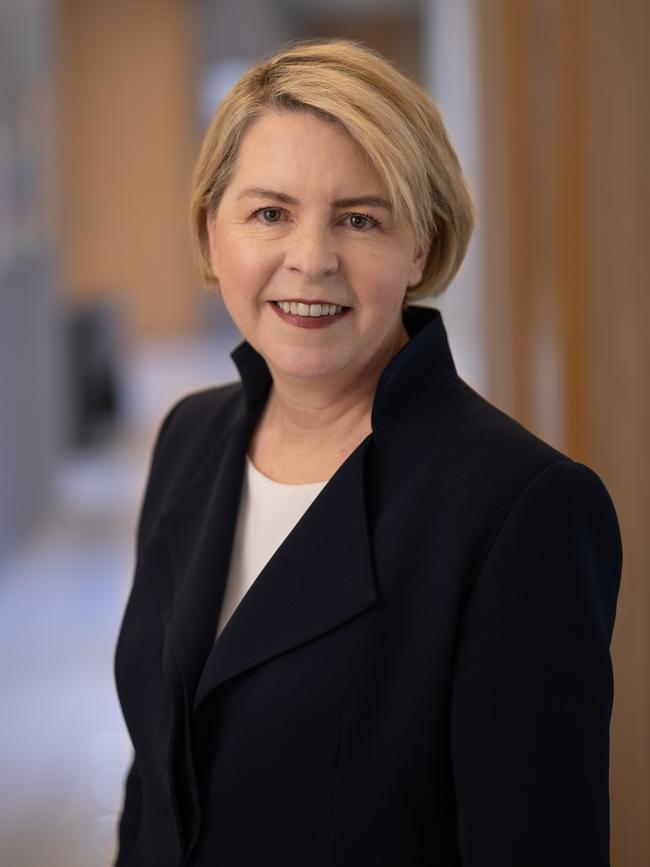Influx of female partners at Australia’s top legal firms
Law firms have experienced a surge in female partners but the industry says more needs to be done. See which employers measure up.

Legal firms have experienced a surge in female partners as businesses prioritise policies to catapult women into senior positions, but industry leaders say there is “much work” to be done to increase representation in high places.
The Australian’s Legal Partnerships Survey has revealed 33 per cent of partners across the country’s law firms are women (up 2 per cent on the previous six months), along with 61 per cent of graduates (up 0.1 per cent) and 29 per cent of equity partners (up 2 per cent).
Australian firm Lander & Rogers is the largest practice edging towards gender parity among its senior staff, with women representing 48 per cent of partners with 44 in total.
Chief executive partner Genevieve Collins told The Australian the reason for the firm’s high numbers was consistent policy and procedures that made the workplace a welcoming environment for women.
Speaking of the firm’s mandatory sexual harassment reporting scheme, mentoring programs and 26 week parental leave policy, Ms Collins said a firm would never achieve gender parity if it just focused on hiring.

“Every organisation is different, but you need to ensure your culture and leadership structure and governance model is set on achieving gender parity to actually get there,” she said. “It’s not about one distinctive initiative or policy, it’s about looking at everything.”
She said it was unsurprising that more women than men were being hired at a graduate level – “there is no doubt that the female lawyers at a graduate level are more mature than the males of the same age” – but said what mattered was what came after that.
Lander & Rogers removed its pay secrecy clause about four years before it was mandated under the Fair Work Act, Ms Collins said, and this had allowed women to discuss their remuneration with their male counterparts and ask her if they felt they were being short-changed.
“We encourage people to discuss their remuneration with their supervisor, and you can pitch for more money in writing or in person,” she said.
“By allowing it to be in writing or in person, it gives everyone a chance. We know men tend to be more aggressive, so it is about making sure women ask for what they think they deserve.”
Gilchrist Connell has had a rise in female partners, jumping from 39 per cent to 42 per cent, as did Gadens which leapt from 36 per cent to 39 per cent. Meanwhile, Baker McKenzie jumped from 28 per cent to 35 per cent and Cooper Grace Ward from 40 per cent to 42 per cent.
Nearly 43 per cent of partners at top tier firm Ashurst are women. Head of Region Australia, Lea Constantine, attributes this to strong targets, mentorship programs and an environment where women can thrive.
“Over the past couple of years we have recruited more women than men,” she said. “We have a really good global parental leave policy that’s gender-neutral (so) applies to men and women. We focus on leadership capabilities.”
Global firm King & Wood Mallesons rose from 32 per cent to 34 per cent following the appointment of three women – Shirley Cheng, Larissa Buriak and Emily Heffernan – as partners. Chief executive partner Renae Lattey said the key to getting more women into senior positions was “understanding what the barriers are to progression and taking very deliberate steps to address (them)”.
“There is still a long way to go at the partnership level in terms of numbers and we will continue to tackle the structural and cultural levers that will drive the change we want to see,” she said.
But Law Council of Australia President Luke Murphy said “much work” remained to be done to elevate women to positions of power, adding that the onus lay with leadership.
“Targets, policies and programs specifically designed to achieve gender equity should be proactively implemented and periodically measured and reviewed for effectiveness,” he said.
“Consistent monitoring and reporting ensures transparency and accountability and keeps the issue on the agenda as a high business priority. It also means that equity measures can be adjusted where they are identified as not having the intended effect of increasing inclusion and diversity at all levels of a firm.”
Hopgood Ganim saw a decrease in female partnerships from 27 per cent to 23 per cent, while HFW saw a drop from 29 per cent to 25 per cent.








To join the conversation, please log in. Don't have an account? Register
Join the conversation, you are commenting as Logout